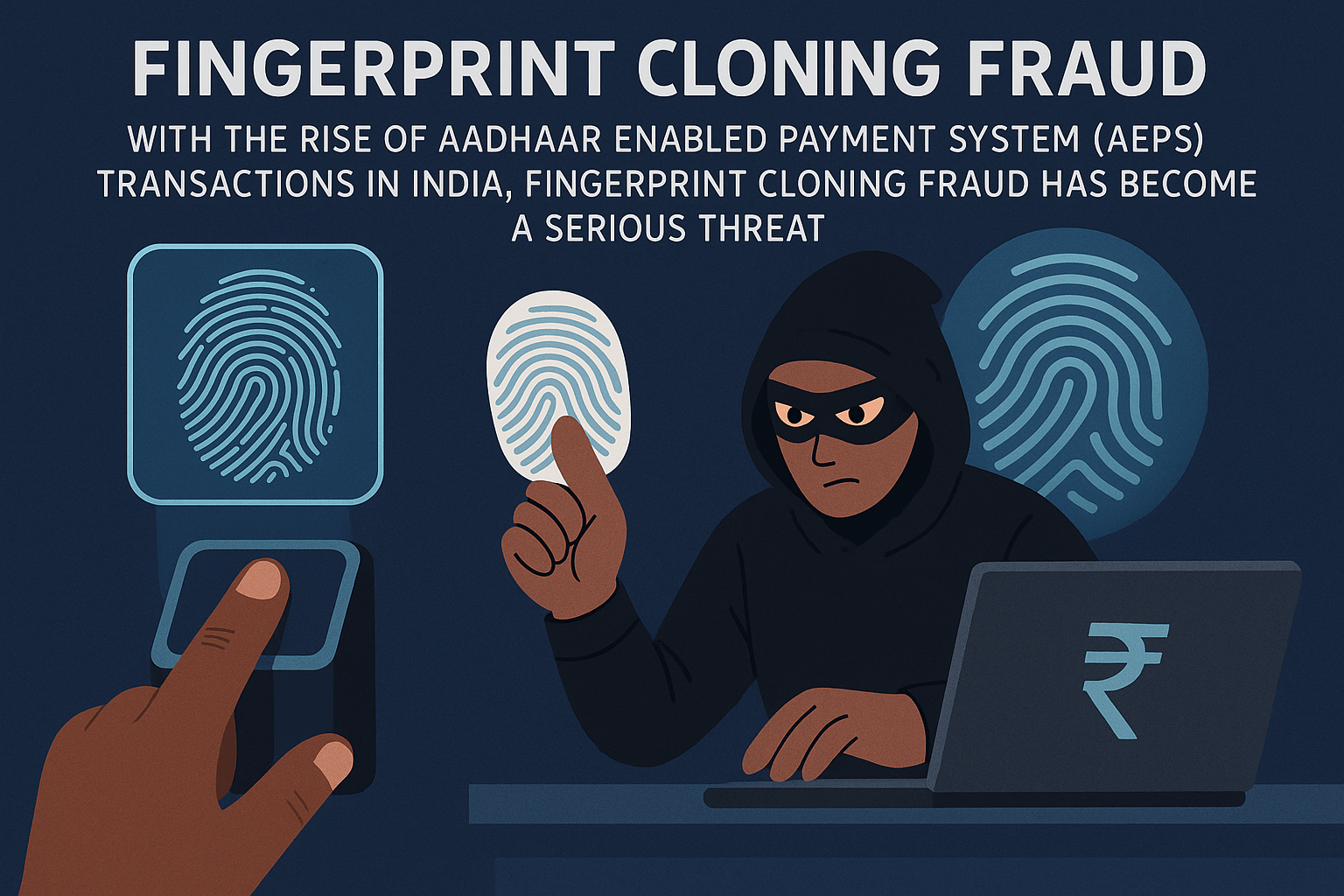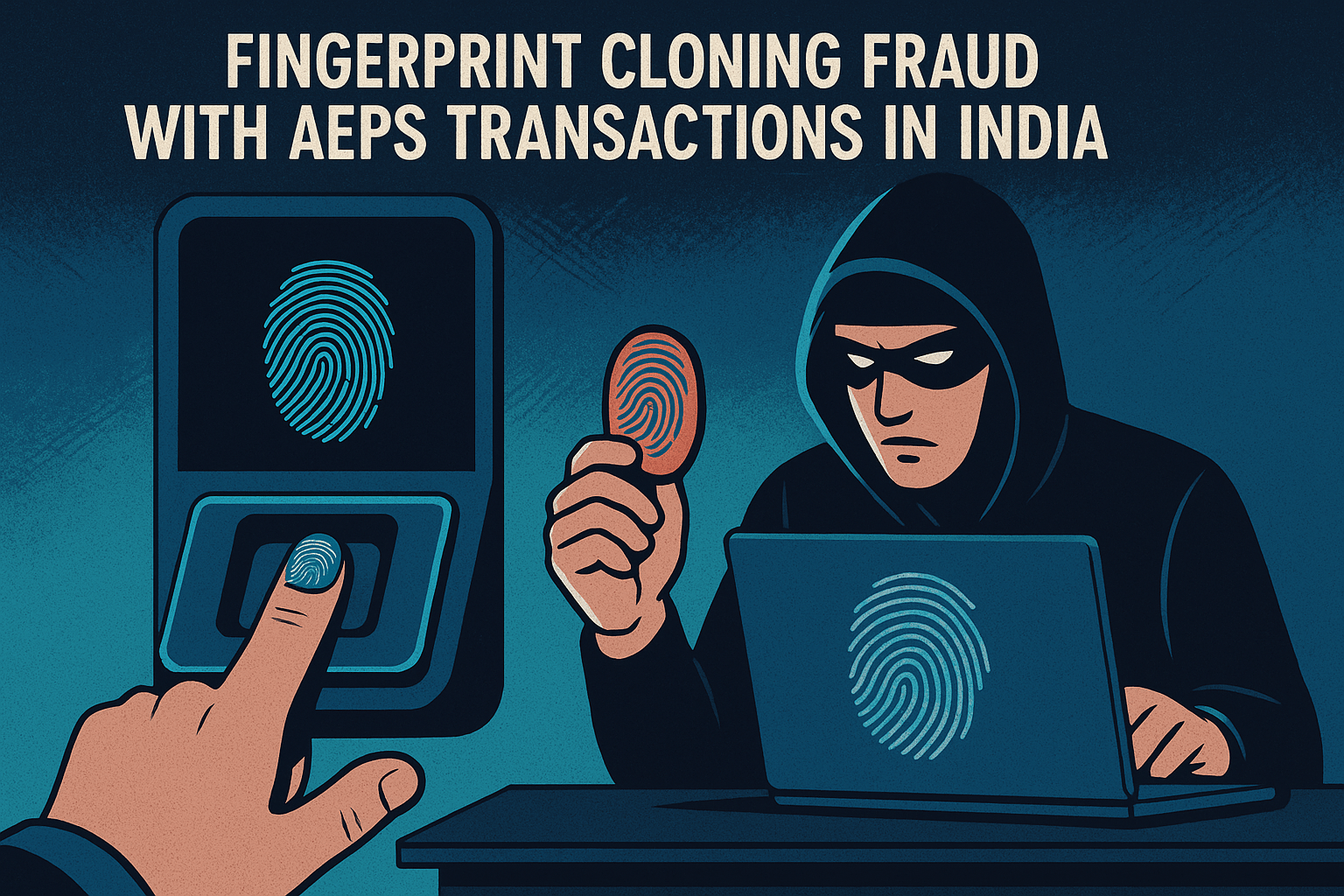Fingerprint authentication is one of the most secure ways to verify identity—until it isn’t. With the rise of Aadhaar Enabled Payment System (AEPS) transactions in India, fingerprint cloning fraud has become a serious threat. Criminals are now stealing biometric data to siphon money from unsuspecting victims.
But how can you tell if your fingerprint has been cloned? And what steps can you take to protect yourself? In this detailed guide, we’ll break down AEPS fingerprint cloning fraud, how it happens, warning signs, and preventive measures.
What Is AEPS Fingerprint Cloning Fraud?
The Aadhaar Enabled Payment System (AEPS) allows users to make bank transactions using just their Aadhaar number and fingerprint authentication. While convenient, this system has a major vulnerability: fingerprints can be copied.
Fraudsters use various techniques to clone fingerprints, including:
-
Silicon molds – Criminals lift fingerprints from surfaces and create artificial replicas.
-
High-resolution photos – A simple photograph of a fingerprint can sometimes be enough to recreate it digitally.
-
Biometric database leaks – If Aadhaar or other biometric databases are compromised, stolen fingerprints can be misused.
Once cloned, these fingerprints are used to fraudulently withdraw money from victims’ bank accounts via AEPS.

How to Check If Your Fingerprint Has Been Misused
Since fingerprint fraud is silent (you won’t get an OTP or alert), detecting it early is crucial. Here are red flags that your fingerprint may have been cloned:
1. Unauthorized AEPS Transactions
-
Check your bank statements for small, unexplained withdrawals (fraudsters often test with minor amounts first).
-
Look for transactions labeled “AEPS Cash Withdrawal” that you didn’t authorize.
2. Failed Authentication Attempts
-
If your fingerprint frequently fails during legitimate transactions, someone else might be using a cloned version.
-
Banks may flag multiple failed attempts from different locations.
3. Suspicious Requests for Biometric Data
-
Be wary of fake government officials or “bank agents” asking for fingerprint scans.
-
Never share your Aadhaar or biometric details over phone calls or messages.
4. Your Aadhaar is Linked to Unknown Accounts
-
Visit the UIDAI website and check the Aadhaar Authentication History to see where your biometrics were used.
-
If you notice unfamiliar authentication logs, report them immediately.
How to Protect Yourself from Fingerprint Cloning Fraud
1. Lock Your Biometric Data
-
Use the UIDAI’s Biometric Locking feature to temporarily disable Aadhaar-based authentication.
-
Enable it only when needed.
2. Regularly Monitor Bank Transactions
-
Set up SMS alerts for all AEPS transactions.
-
Report unauthorized withdrawals to your bank immediately.
3. Avoid Sharing Fingerprints Unnecessarily
-
Refuse fingerprint scans unless absolutely required (e.g., government verification).
-
Be cautious of scams offering freebies in exchange for biometric data.
4. Use Alternate Authentication Methods
-
Where possible, opt for OTP-based or IRIS scanning instead of fingerprints.
-
Some banks allow disabling AEPS—check with your provider.
What to Do If You’re a Victim of Fingerprint Fraud?
-
File a Police Complaint – Report the fraud to cybercrime authorities.
-
Notify Your Bank – Freeze suspicious transactions and request an account audit.
-
Contact UIDAI – Report biometric misuse via UIDAI’s helpline (1947).
-
Change Authentication Methods – Switch to non-biometric verification where possible.

Frequently Asked Questions (FAQs)
1. Can someone withdraw money with just a cloned fingerprint?
Yes, if your Aadhaar is linked to your bank account, a cloned fingerprint can be used for AEPS transactions.
2. How do fraudsters steal fingerprints?
They may lift prints from surfaces you touch, use leaked biometric data, or trick victims into scanning fingerprints on fake devices.
3. Can I disable AEPS on my bank account?
Some banks allow it—contact customer support to check. Alternatively, lock your Aadhaar biometrics when not in use.
4. Is fingerprint authentication still safe?
While convenient, it has risks. Combining it with OTP or IRIS scans improves security.
Final Thoughts
AEPS fingerprint cloning fraud is a growing threat, but awareness and proactive measures can minimize risks. Monitor transactions, lock biometrics when unused, and report suspicious activity immediately.
Stay vigilant—your fingerprint is as valuable as your password!
Disclaimer
This post is for educational purposes only. If you believe any content violates your rights, please refer to our DMCA page for removal requests. Always verify information with official sources before taking action.
